
- 1
- 2
- 3
- 4
- 5
- 6
Introduction
Blockchain technology has evolved far beyond cryptocurrencies. Today, it plays a critical role in industries such as finance, logistics, healthcare, supply chain management, and real estate. According to Statista, over 10% of global GDP is expected to be stored on blockchain by 2030.
The blockchain space is moving rapidly with constant innovation in protocols, platforms, and enterprise use cases. Staying informed about the best blockchain development trends is essential for businesses looking to maintain a competitive edge, reduce costs, and future-proof their operations.
In this article, we’ll explore the best blockchain development trends in 2025, backed by market data and practical insights.
The growth of the blockchain market
The global blockchain market is experiencing explosive growth. Valued at $17.5 billion in 2023, it’s expected to reach $825 billion by 2032, with a compound annual growth rate (CAGR) of 85.7%. It reflects real demand across sectors. Key growth drivers:
1. Decentralized Finance (DeFi) and Web3 expansion
The DeFi ecosystem surpassed $100 billion in total value locked (TVL) in early 2025, driven by demand for open, permissionless financial services. Meanwhile, Web3 platforms are reshaping identity, payments, and content ownership, attracting both retail users and institutional capital.
2. Enterprise demand for data integrity
Businesses are under pressure to improve data transparency, supply chain traceability, and auditability. Blockchain enables real-time verification, reduces fraud, and simplifies compliance, especially in sectors like logistics, healthcare, and manufacturing.
3. Government involvement and regulatory progress
Governments in over 130 countries are exploring Central Bank Digital Currencies (CBDCs), with pilot programs already live in China, the EU, and parts of Africa. Regulatory clarity around smart contracts, digital assets, and tokenization is driving confidence for enterprise adoption.
Best blockchain development trends in 2025
Layer 2 scaling solutions
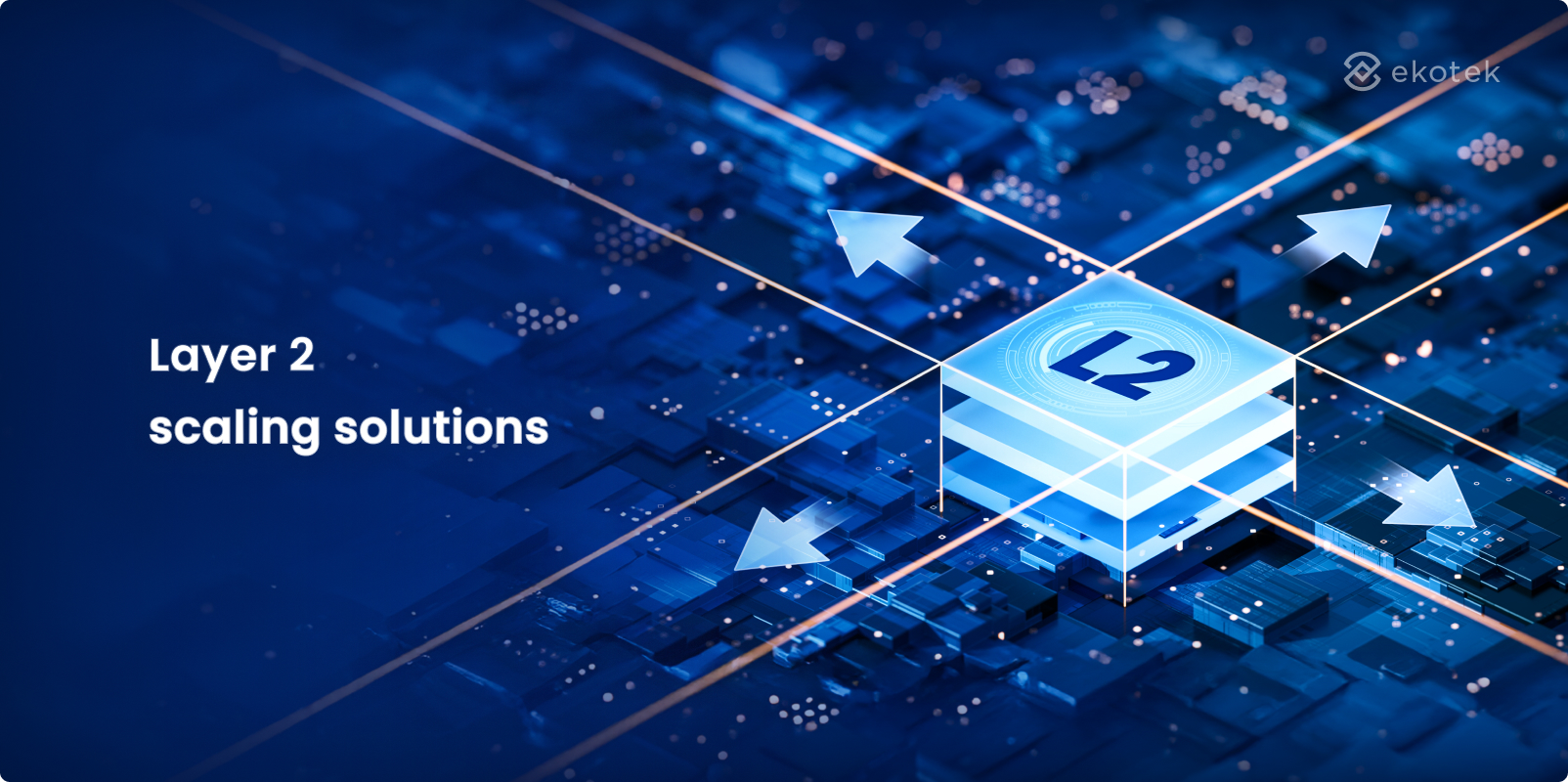 One of the best blockchain development trends in 2025 is the rapid adoption of Layer 2 scaling solutions. These technologies are built on top of base-layer blockchains (like Ethereum) to improve speed, reduce transaction costs, and enhance user experience, without compromising security.
One of the best blockchain development trends in 2025 is the rapid adoption of Layer 2 scaling solutions. These technologies are built on top of base-layer blockchains (like Ethereum) to improve speed, reduce transaction costs, and enhance user experience, without compromising security.
Key technologies:
- Optimistic rollups (Arbitrum, Optimism): Batch transactions and only verify when fraud is suspected.
- zk-Rollups (zkSync, StarkNet): Use zero-knowledge proofs to validate many transactions efficiently and securely.
For companies building decentralized applications (dApps), Layer 2 enables:
- Up to 100x lower transaction fees
- Near-instant settlement with high throughput
- Improved UX with minimal gas fee friction
This unlocks new opportunities in cost-sensitive sectors like retail payments, microtransactions, and Web3 gaming, where mainnet fees previously limited viability.
📌 Looking to build the future of decentralized gaming? Don’t miss our in-depth guide on inclusive Web3 game ecosystems.
Blockchain interoperability
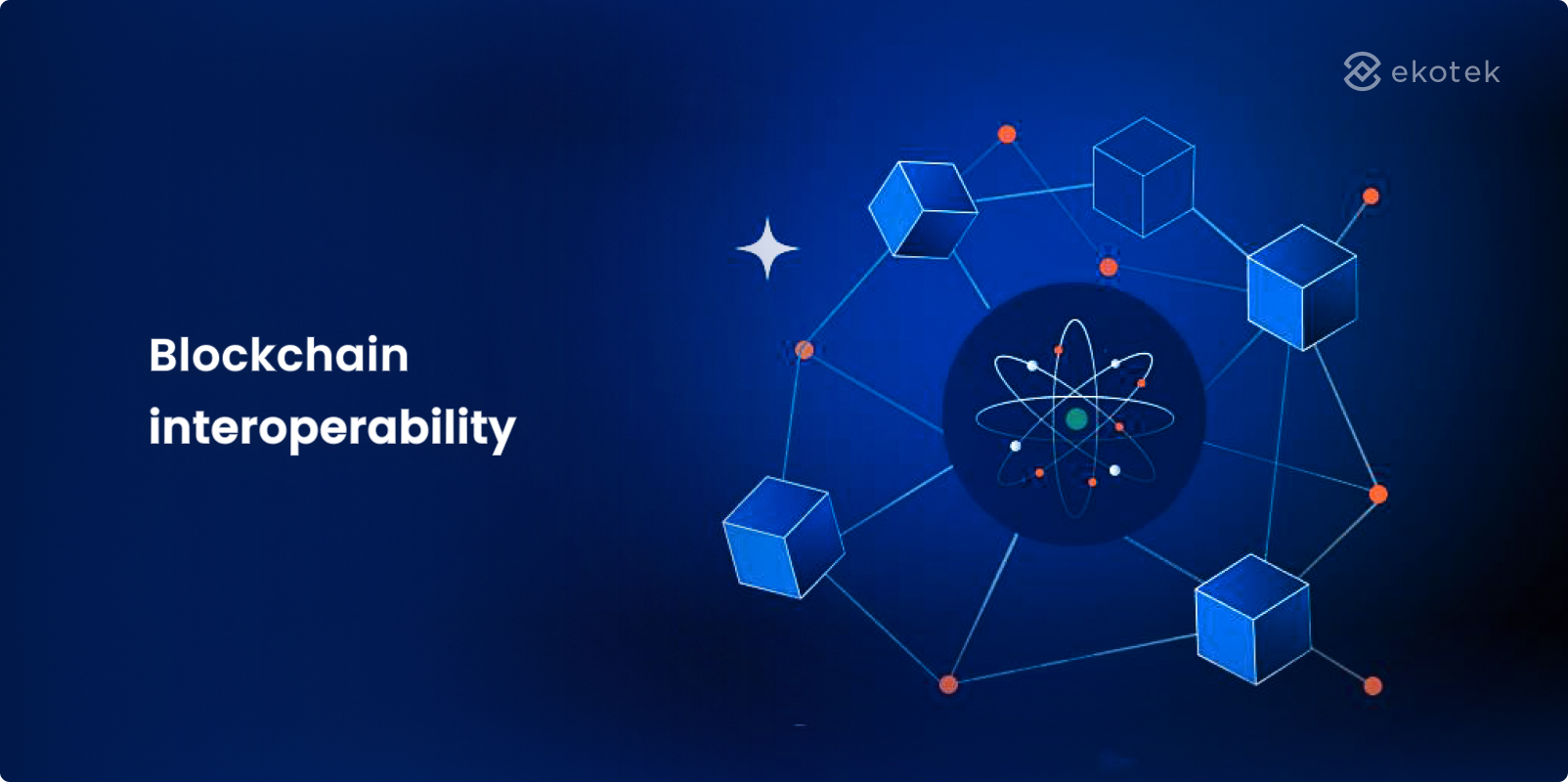 In today’s landscape, most blockchains still function in isolation, limiting the transfer of data and assets across different networks. This fragmentation hampers collaboration, slows innovation, and creates technical inefficiencies for enterprises.
In today’s landscape, most blockchains still function in isolation, limiting the transfer of data and assets across different networks. This fragmentation hampers collaboration, slows innovation, and creates technical inefficiencies for enterprises.
Interoperability protocols aim to connect these siloed systems, enabling seamless communication between chains, whether for asset transfers, smart contract execution, or data sharing.
Leading technologies:
- Polkadot: Enables specialized blockchains (parachains) to interact securely through a central relay chain.
- Cosmos: Uses the Inter-Blockchain Communication (IBC) protocol for cross-chain token and data exchange.
- Chainlink CCIP (Cross-Chain Interoperability Protocol): A generalized messaging and token transfer standard supported by major institutions.
Real-world use cases:
- Cross-chain DeFi platforms: Users can lend, borrow, and swap assets across different networks (Ethereum, BNB Chain, Solana) in a single interface.
- Supply chain tracking: Manufacturers and vendors on different blockchains (logistics on VeChain, payments on Ethereum) can share verified data.
- Cross-border payments: Stablecoins or CBDCs issued on different chains can interoperate for faster, cheaper international settlements.
📌 Cross-border payments are being redefined by blockchain. Discover the key opportunities and hurdles
Enterprise blockchain adoption
 Companies across industries are leveraging blockchain to solve long-standing problems in transparency, data integrity, and trust within their ecosystems. While public blockchains offer transparency and decentralization, many enterprises opt for private or permissioned chains to meet regulatory, privacy, and governance requirements.
Companies across industries are leveraging blockchain to solve long-standing problems in transparency, data integrity, and trust within their ecosystems. While public blockchains offer transparency and decentralization, many enterprises opt for private or permissioned chains to meet regulatory, privacy, and governance requirements.
📌 Explore cross-industry blockchain use cases driving innovation
Key technologies in use:
- Hyperledger fabric: Modular architecture for supply chain, identity, and finance solutions
- Quorum: Ethereum-based, enterprise-focused, used by JPMorgan
- Corda: Purpose-built for regulated financial services and trade finance
Industry applications:
- Banking and finance: On-chain settlements, syndicated lending, and regulatory reporting (JPMorgan Onyx)
- Manufacturing: Track-and-trace systems for parts, raw materials, and ESG compliance
- Healthcare: Secure sharing of medical records between providers, insurers, and regulators with full audit trails
One standout application is from Ekotek, which implemented a blockchain solution for a leading F&B brand to combat counterfeiting and enhance digital authenticity.
Using blockchain, each product unit was tagged with a unique digital identity, allowing consumers to verify authenticity via a QR scan, strengthening trust while collecting real-time consumer insights.
This solution not only tackled counterfeit risk but also served as a digital bridge between the brand and its end consumers.
📌 Curious how this works? Explore the full case study here
Blockchain and AI Integration
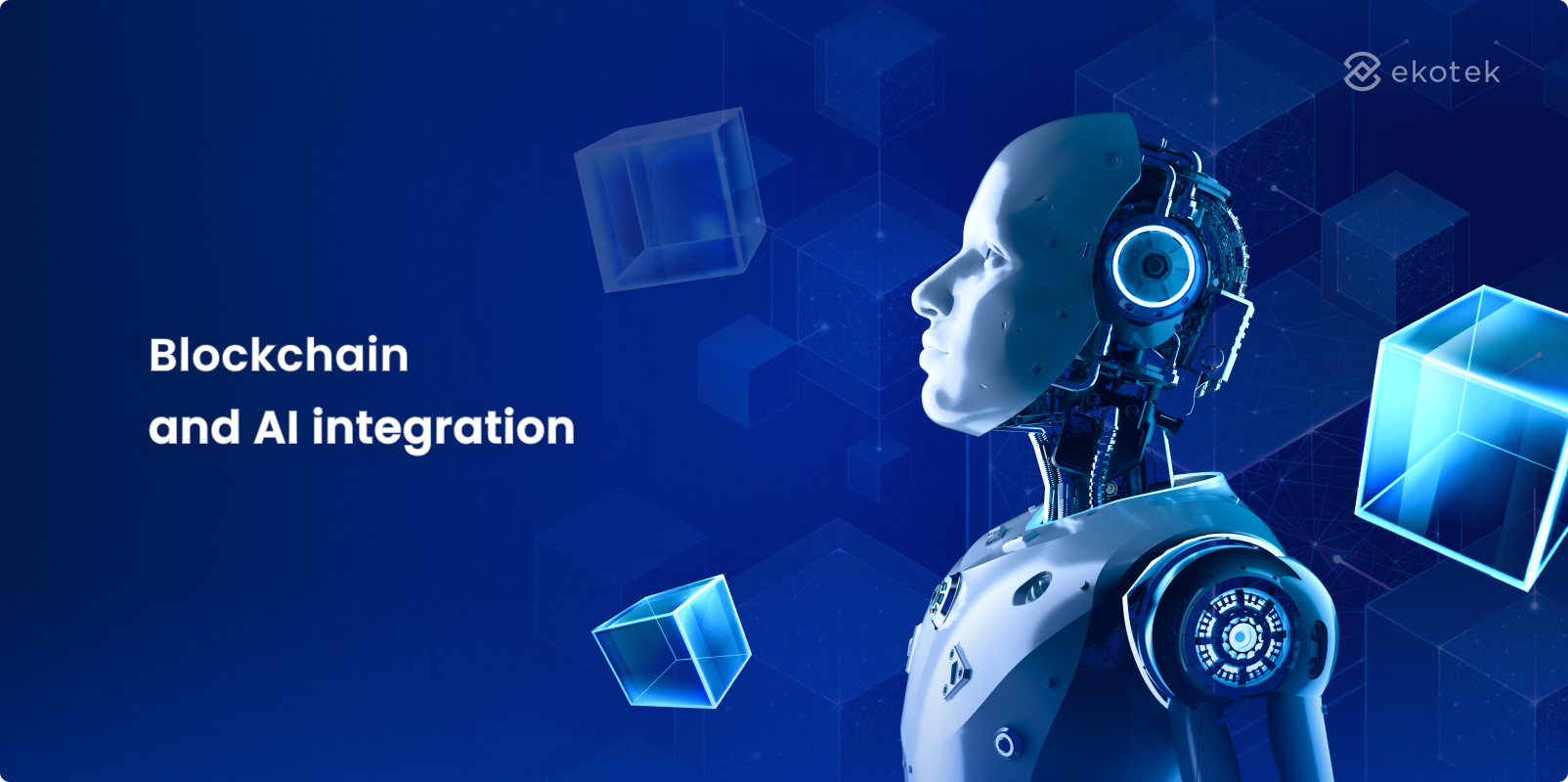 The convergence of blockchain and AI is one of the most transformative developments in today’s enterprise tech stack, and firmly belongs on the list of the best blockchain development trends in 2025.
The convergence of blockchain and AI is one of the most transformative developments in today’s enterprise tech stack, and firmly belongs on the list of the best blockchain development trends in 2025.
While these technologies were often explored in isolation, forward-looking companies are now combining them to build intelligent, auditable, and secure systems, turning raw data into actionable insights, with full traceability and trust.
Why they complement each other:
- Blockchain ensures data integrity, every transaction or data input is recorded immutably, with full audit trails.
- AI extracts value from data, analyzing patterns, detecting anomalies, and automating decisions.
Key enterprise use cases:
- Fraud detection in finance: AI models trained on blockchain-verified transaction histories can detect suspicious activity in real time, minimizing false positives while ensuring compliance.
- AI-driven smart contracts: Contracts that can interpret and respond to real-world events, powered by AI and anchored to blockchain for execution and auditability (in insurance claims or dynamic pricing).
- Data sharing across organizations: In healthcare, manufacturing, and logistics, AI models often rely on siloed data. By sharing data over blockchain with built-in access control and audit trails, multiple stakeholders can collaborate with confidence, knowing that data is accurate and unaltered.
📌 Unlock the benefits of AI integration with this comprehensive guide
Smart contract automation and security
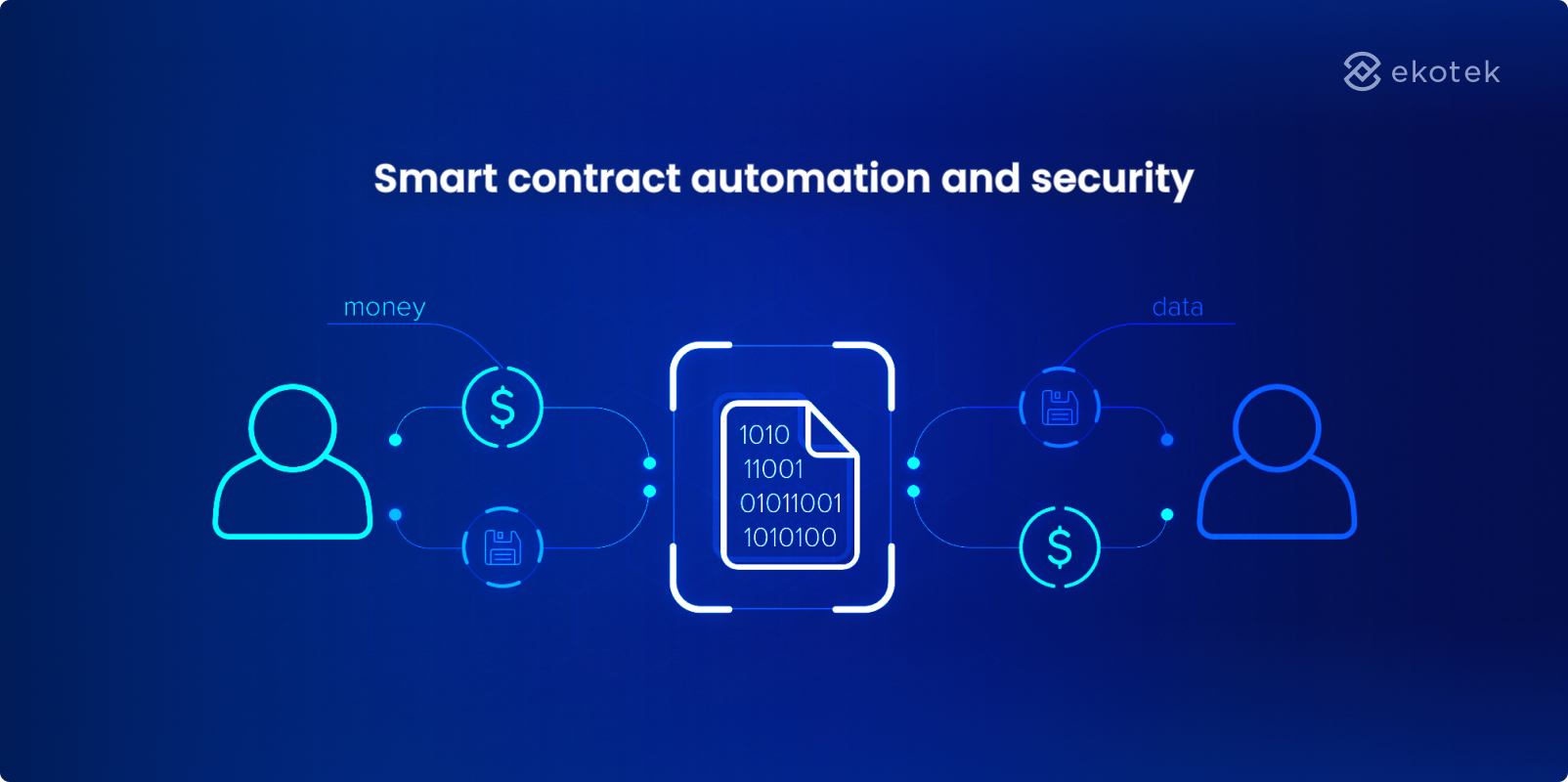 Smart contracts are becoming foundational to enterprise blockchain use cases, automating everything from payments to compliance. But with automation comes increased risk, making security a non-negotiable priority.
Smart contracts are becoming foundational to enterprise blockchain use cases, automating everything from payments to compliance. But with automation comes increased risk, making security a non-negotiable priority.
Why it matters:
- Immutable by design: Once deployed, smart contracts cannot be changed — vulnerabilities become permanent.
- High-value targets: DeFi, tokenization, and legal contracts often involve large financial stakes.
- Reputational risk: A single exploit can lead to brand damage, legal scrutiny, and loss of user trust.
- Regulatory exposure: Inadequate controls may violate data protection, financial, or consumer laws.
Key enterprise applications:
- Legal automation: Self-executing NDAs, licensing agreements, and royalty disbursements.
- Real estate tokenization: Automating ownership transfers, rent distribution, and fractional investment.
- DeFi protocols: Managing lending, staking, and yield logic without intermediaries.
Tokenization of real-world assets (RWAs)
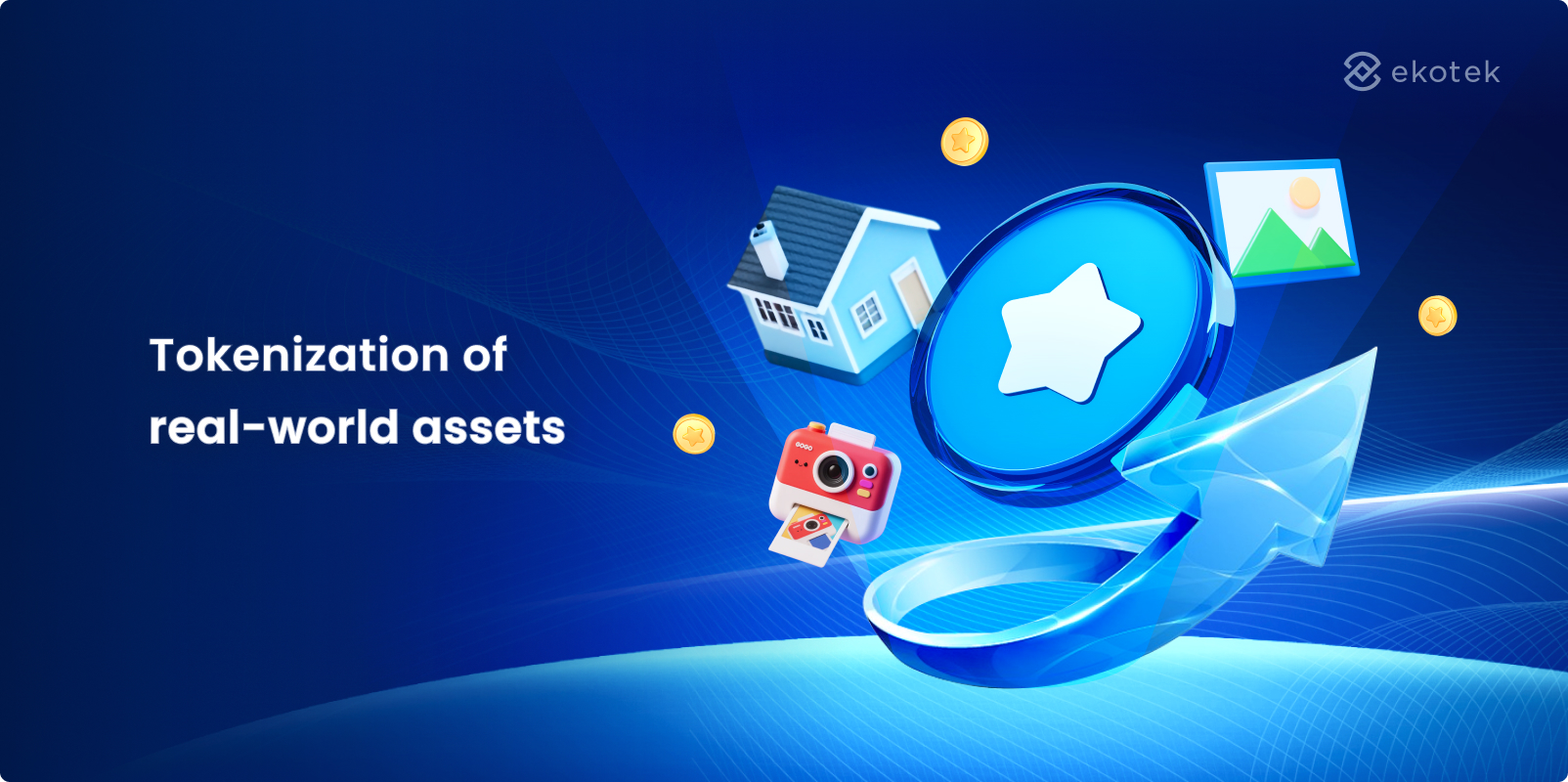 Tokenization of real-world assets is emerging as one of the best blockchain development trends, enabling businesses to digitize ownership of physical assets and unlock new value streams.
Tokenization of real-world assets is emerging as one of the best blockchain development trends, enabling businesses to digitize ownership of physical assets and unlock new value streams.
Why it matters:
- Unlocks liquidity: Converts traditionally illiquid assets into tradeable tokens.
- Enables fractional ownership: Lowers entry barriers for investors and diversifies fundraising.
- Improves transparency: Every transaction is traceable, verifiable, and immutable.
- Expands investor reach: Attracts global participants without relying on intermediaries.
Key business applications:
- Real estate: Tokenized buildings or rental properties with instant settlement and global access.
- Equity and fundraising: Private shares issued as tokens for simplified cap table management.
- Carbon credits: Verifiable and tradable ESG assets, traceable on public or permissioned blockchains.
- Luxury assets: Art, wine, or jewelry tied to NFTs or asset-backed tokens for authenticated resale.
One notable example comes from Ekotek, which developed a tokenization solution specifically for certified diamonds – a sector where digital proof of authenticity is essential. To address this, Ekotek developed a blockchain-based solution that tokenizes individual diamonds into NFTs, each embedded with verified metadata including origin, certification, and characteristics.
The platform allows owners to lock and unlock their tokens, enabling secure redemption of the corresponding physical diamond from storage. This provides buyers with transparent proof of ownership and authenticity, while offering the business a scalable framework for digital asset management.
📌 Discover how Ekotek turned physical diamonds into secure digital assets
Sustainable and green blockchain initiatives
 As environmental, social, and governance (ESG) goals take center stage in boardrooms, the shift toward sustainable blockchain infrastructure is becoming one of the best blockchain development trends in 2025.
As environmental, social, and governance (ESG) goals take center stage in boardrooms, the shift toward sustainable blockchain infrastructure is becoming one of the best blockchain development trends in 2025.
Why it matters:
- ESG pressure is rising: Investors, regulators, and consumers expect businesses to adopt low-carbon technologies.
- Green credentials impact brand value: Sustainability enhances trust, particularly in finance, retail, and supply chain sectors.
- Regulatory alignment: Carbon-neutral goals are now embedded in global trade policies and climate disclosure frameworks.
Key industry shifts:
- Proof of Stake (PoS): Ethereum’s transition from Proof of Work to PoS slashed its energy use by over 99%, setting a precedent for scalable, eco-conscious blockchain deployment.
- Low-energy protocols: Networks like Algorand, Cardano, and Tezos are engineered for sustainability, using consensus mechanisms that reduce both energy consumption and hardware reliance.
Business use cases:
- Carbon credit marketplaces: Blockchain enables transparent issuance, tracking, and trading of verified carbon offsets.
- Sustainable supply chains: ESG data from raw material sourcing to delivery can be immutably tracked on green blockchains.
- Green finance: Smart contracts can automate ESG-linked bonds and sustainability performance metrics.
How to stay ahead in the blockchain space
Upskill your team with strategic focus
Whether you’re building in-house capabilities or simply aiming to evaluate vendors effectively, having a baseline understanding of key technologies is essential. Encourage your team to build expertise in:
- Solidity: For Ethereum and EVM-compatible chains
- Rust: Used in high-performance blockchains like Solana and Polkadot
- Go: Powering platforms like Hyperledger and Cosmos
To support this, invest in continuous learning via trusted platforms such as Coursera, edX, GitHub, and participation in blockchain hackathons. Even a foundational technical understanding helps stakeholders make better decisions when evaluating external partners or new product ideas.
📌 Learn what it really takes to build a blockchain app – tech, budget, and steps
Collaborate with experienced blockchain development partners
Keeping up with blockchain trends doesn’t always mean doing everything in-house. Many businesses accelerate their time-to-market and reduce technical risk by outsourcing to specialized blockchain development firms.
These partners can offer:
- Strategic guidance on protocol selection and architecture
- Ready-to-deploy teams across different stacks and ecosystems
- Flexible engagement models
Instead of spending months hiring rare talent, you gain instant access to experienced professionals already working across DeFi, NFTs, Layer 2s, and more, helping your business adopt blockchain trends with confidence.
📌 Make smarter outsourcing decisions with this comprehensive evaluation framework
Start lean, test fast, learn early
Adopting blockchain is often about experimentation, and success usually comes from rapid iteration, not over-planning.
Launch small MVPs on testnets to:
- Validate technical feasibility without incurring mainnet costs
- Collect early feedback from users and developer communities
- Identify critical usability or scalability gaps before going live
This agile, feedback-driven approach reduces waste and increases your chances of product-market fit, especially important in such a dynamic space.
Ekotek’s blockchain development services
Ekotek offers end-to-end blockchain development services to help businesses adopt the best blockchain development trends with speed, efficiency, and confidence.
- Consulting: Strategic guidance from solution planning to deployment.
- dApps: Full-cycle development or integration of secure, scalable dApps.
- Smart contracts: Custom-built, self-executing contracts for fast, trustless transactions.
- Public and private blockchain: Development and maintenance of both open and permissioned blockchain networks.
- Tokenization: Transform real-world or digital assets into blockchain-based tokens.
- White-label solutions: Pre-built blockchain platforms ready for customization and quick launch.
Whether you’re starting from scratch or scaling an existing idea, Ekotek helps you move fast and build right in the blockchain space.
Conclusion
The blockchain ecosystem is evolving rapidly, with key trends like enterprise adoption and tokenization driving meaningful change across industries. For businesses, the opportunity lies not just in understanding these trends but in turning them into real, scalable solutions.
Ekotek helps you do exactly that. With over a decade of experience and 200+ successful blockchain projects delivered globally, Ekotek combines deep technical expertise with strategic insight. Our team of seasoned engineers and consultants works closely with clients to solve complex business challenges and deliver high-quality blockchain solutions on time and at scale.
Ready to take the next step in your blockchain journey? Talk to Ekotek today.
- 1
- 2
- 3
- 4
- 5
- 6
